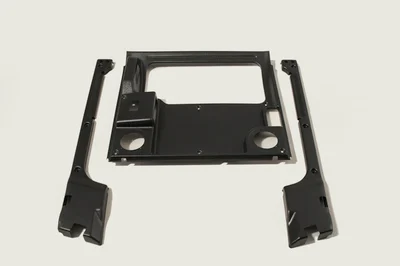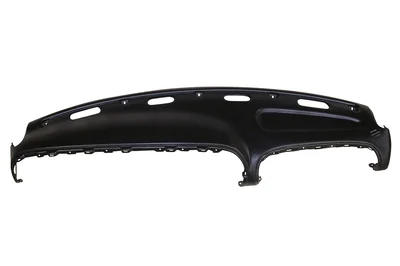Choosing the Right Material for Thermoformed Vehicle Components
When it comes to selecting materials for vehicle components, manufacturers face a complex decision-making process that involves balancing durability, weight, aesthetics, and safety. In this article, we take a closer look at the key factors involved in choosing materials specifically for thermoformed vehicle parts, highlighting why these materials are becoming increasingly popular in modern automotive design.
Impact Resistance and Durability
 Vehicle parts are constantly exposed to various stresses throughout their lifespan. From luggage and electronics to regular passenger contact, components must withstand repeated impacts. At the same time, they need to endure frequent cleaning with harsh chemicals, which can degrade traditional materials over time. The vibration and movement inherent in vehicle operation, along with environmental exposure, create a challenging performance environment.
Vehicle parts are constantly exposed to various stresses throughout their lifespan. From luggage and electronics to regular passenger contact, components must withstand repeated impacts. At the same time, they need to endure frequent cleaning with harsh chemicals, which can degrade traditional materials over time. The vibration and movement inherent in vehicle operation, along with environmental exposure, create a challenging performance environment.
Historically, materials like Glass Reinforced Plastic (GRP or fiberglass) were used due to their stiffness. However, these materials tend to be brittle and can crack or chip under impact. Modern thermoplastics, especially KYDEX® materials, offer superior impact resistance, passing drop dart tests with ease and maintaining integrity under repeated stress. This makes them an ideal choice for high-demand applications where reliability is crucial.
Weight Considerations
As fuel efficiency becomes a top priority in vehicle design, material density plays a critical role. Thermoplastics provide significant weight savings compared to traditional materials like steel or aluminum, offering better strength-to-weight ratios. This not only improves fuel economy but also reduces the overall environmental footprint of the vehicle.
The reduced weight also contributes to better handling and performance, making thermoplastics an attractive option for manufacturers focused on both efficiency and sustainability.
Aesthetic Durability
Maintaining a good appearance is essential for both interior and exterior vehicle components, especially in commercial and public transport settings. Through-colored thermoplastics retain their color even when scratched, while textured surfaces help mask minor wear and tear. Unlike painted metals or laminates, there’s no surface coating to chip or peel, ensuring long-term visual appeal.
These materials come in a wide range of colors, patterns, and textures—including woodgrain and metallic finishes—offering designers flexibility without sacrificing durability or quality.
Interior Components
Interior parts such as seatbacks, tray tables, and wall panels require materials that meet strict flame retardant standards while providing excellent impact resistance. These components must also withstand frequent cleaning and maintain their appearance over time. Weight is another important factor, as interior parts contribute significantly to the vehicle's overall mass.
Thermoplastics excel in these areas, offering a combination of safety, durability, and lightweight properties that make them ideal for interior use.
Exterior Components
Exterior vehicle parts face even more extreme conditions, requiring materials with exceptional weatherability and resistance to road chemicals and cleaning agents. They must perform well in abrasive environments while maintaining structural integrity and visual appeal.
UV stability and corrosion resistance are vital for exterior components, making material selection even more critical. Thermoplastics provide the necessary resilience to handle these challenges effectively.
Fabrication Advantages
 Modern thermoplastics offer several advantages in manufacturing. They can be thermoformed into complex shapes with lower tooling costs than traditional metal forming methods. This allows manufacturers to produce large, detailed parts efficiently without compromising quality.
Modern thermoplastics offer several advantages in manufacturing. They can be thermoformed into complex shapes with lower tooling costs than traditional metal forming methods. This allows manufacturers to produce large, detailed parts efficiently without compromising quality.
Additionally, thermoplastics eliminate the need for pre-drying before forming, reduce cycle times, and operate at lower temperatures. Post-forming operations are simpler, often requiring just basic automation or standard woodworking tools.
Customization Options
Material selection should also consider customization options to meet specific design needs. Modern thermoplastic manufacturers offer a wide range of standard colors and textures, with custom options available at reasonable minimum orders. Surface textures can be tailored to achieve desired aesthetic and functional goals, while reinforcing features can be added during the forming process for enhanced performance.
Safety and Compliance
Different transportation sectors have unique regulatory requirements that influence material choices. For example, aerospace components must meet FAR25.853 standards, while mass transit parts must comply with NFPA 130. Automotive components, on the other hand, need to satisfy FMVSS 302 standards. Across all industries, flame resistance and smoke toxicity are key considerations in material approval processes.
In summary, modern thermoplastics offer a compelling alternative to traditional materials. Their superior durability, impact resistance, and weight-saving benefits make them ideal for a wide range of vehicle applications. Combined with easy fabrication, broad customization options, and strong compliance with safety standards, thermoplastics are becoming the go-to choice for many manufacturers.
While traditional materials like metals and GRP still have their place, thermoplastics provide a well-rounded solution that balances performance, aesthetics, and production efficiency. As vehicle design continues to evolve, the use of advanced thermoplastics is likely to grow even further.
Pipe Chamfering Machine,Pipe Tube Chamfering Machine,Pipe Chamfer Machine,Tube Shaping Machine
Zhangjiagang heshun machinery manufacturer co.,ltd. , https://www.hsformer.com